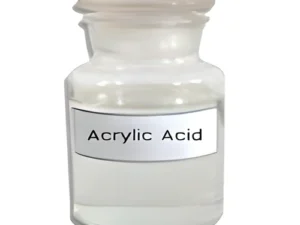Description
2,6-Dimethylphenol, also known as 2,6-xylenol, is a chemical compound with significant industrial importance and diverse applications. This aromatic compound is characterized by its unique chemical properties and structural composition, making it a versatile ingredient in various industrial processes. In this article, we will explore the fundamental aspects of 2,6-Dimethylphenol, including its chemical properties, synthesis methods, applications in different industries, as well as its impact on health, safety, and the environment. Additionally, we will discuss current research trends and future prospects related to this compound, highlighting its relevance in the field of chemistry and industry.
1. Introduction to 2,6-Dimethylphenol
Definition and Overview
Welcome to the world of 2,6-Dimethylphenol, where this chemical compound may have a long name, but we promise to keep it simple and entertaining. This aromatic phenol is like the cool, laid-back cousin of the phenol family, with a unique structure that sets it apart in the chemical world. Let’s dive into what makes 2,6-Dimethylphenol so intriguing!
2. Chemical Properties of 2,6-Dimethylphenol
Structural Composition
Picture this: a phenol with two methyl groups hanging out on the 2nd and 6th carbon atoms, giving it that distinctive 2,6-Dimethylphenol charm. This molecular makeup plays a key role in its properties and behavior, making it a standout star in the world of organic chemistry.
Physical Characteristics
When it comes to physical characteristics, 2,6-Dimethylphenol is no wallflower. With its white crystalline appearance and a distinctive odor that sets it apart from the crowd, this compound knows how to make an entrance. Its melting point, boiling point, and solubility properties add to its allure and usefulness in various applications.
3. Applications and Uses of 2,6-Dimethylphenol
Industrial Applications
From the industrial frontlines to your everyday products, 2,6-Dimethylphenol plays a versatile role. It can be found in antioxidants, polymerization inhibitors, and even as a raw material in the production of dyes and pharmaceuticals. Talk about a chemical multitasker!
Consumer Products
Ever wonder what’s behind that fresh scent in your favorite cleaning products or personal care items? Look no further than 2,6-Dimethylphenol! Its presence in perfumes, disinfectants, and skincare products adds a touch of aromatic magic that enhances the user experience. Who knew a chemical compound could be so versatile and appealing?
4. Synthesis and Production Methods
Chemical Synthesis
Behind the scenes, chemists work their magic to synthesize 2,6-Dimethylphenol through various chemical reactions and processes. By tinkering with the right ingredients and conditions, they can create this compound with precision and efficiency, showcasing the art and science of organic synthesis.
Industrial Production Processes
When it comes to industrial production, efficiency and quality are key. Manufacturers utilize specialized methods and technologies to scale up the production of 2,6-Dimethylphenol, ensuring a steady supply for various industries. From batch processes to continuous production, each step plays a crucial role in meeting the demand for this versatile compound.
And there you have it, a whimsical journey into the world of 2,6-Dimethylphenol, where chemistry meets creativity and practicality. Next time you encounter this compound in your daily life, you’ll have a newfound appreciation for its unique features and wide-ranging applications. Cheers to the phenol that can do it all!
5. Health and Safety Considerations
Exposure Risks
When it comes to 2,6-Dimethylphenol, exposure should be limited as it can irritate the skin, eyes, and respiratory system. Prolonged exposure may lead to headaches, dizziness, and nausea. It’s best to handle this compound with care and use appropriate personal protective equipment.
Regulatory Guidelines
Regulatory bodies like OSHA and EPA have established guidelines for handling 2,6-Dimethylphenol to protect workers and the environment. These guidelines outline safe handling practices, permissible exposure limits, and proper disposal methods. It’s important to adhere to these regulations to ensure safety and compliance.
6. Environmental Impact of 2,6-Dimethylphenol
Ecological Effects
2,6-Dimethylphenol can have adverse effects on aquatic life if released into water bodies. It may be toxic to fish and other aquatic organisms, disrupting ecosystems. Proper containment and prevention of environmental release are crucial to minimize ecological impacts.
Disposal and Waste Management
Disposal of 2,6-Dimethylphenol should be done according to regulations to prevent environmental contamination. Incineration or chemical treatment may be recommended methods for disposal. Proper waste management practices are essential to protect the environment and human health.
7. Future Trends and Research Directions
Emerging Applications
Researchers are exploring new applications for 2,6-Dimethylphenol in industries such as pharmaceuticals, agriculture, and materials science. Its unique properties make it a promising candidate for various innovative uses, driving interest in further exploration.
Ongoing Research Initiatives
Continued research on 2,6-Dimethylphenol focuses on understanding its chemical properties, environmental fate, and potential risks. Ongoing initiatives seek to fill knowledge gaps, enhance safety protocols, and explore novel applications for this compound. Stay tuned for exciting developments in this field!In conclusion, 2,6-Dimethylphenol plays a crucial role in numerous industrial applications and processes, showcasing its versatility and importance in various sectors. Understanding its chemical properties, production methods, and potential impacts is essential for ensuring safe handling and utilization. As research and innovation continue to advance, exploring new applications and sustainable practices for 2,6-Dimethylphenol will be key in shaping a more efficient and environmentally conscious future.











Reviews
There are no reviews yet.